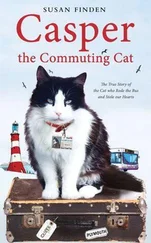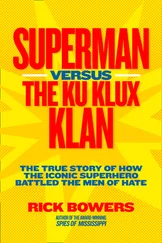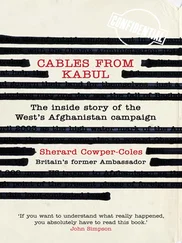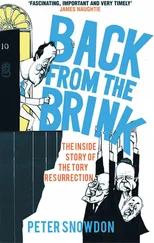Andrew Sorkin - Too Big to Fail - The Inside Story of How Wall Street and Washington Fought to Save the FinancialSystem--and Themselves
Здесь есть возможность читать онлайн «Andrew Sorkin - Too Big to Fail - The Inside Story of How Wall Street and Washington Fought to Save the FinancialSystem--and Themselves» весь текст электронной книги совершенно бесплатно (целиком полную версию без сокращений). В некоторых случаях можно слушать аудио, скачать через торрент в формате fb2 и присутствует краткое содержание. Жанр: Старинная литература, на английском языке. Описание произведения, (предисловие) а так же отзывы посетителей доступны на портале библиотеки ЛибКат.
- Название:Too Big to Fail: The Inside Story of How Wall Street and Washington Fought to Save the FinancialSystem--and Themselves
- Автор:
- Жанр:
- Год:неизвестен
- ISBN:нет данных
- Рейтинг книги:4 / 5. Голосов: 1
-
Избранное:Добавить в избранное
- Отзывы:
-
Ваша оценка:
- 80
- 1
- 2
- 3
- 4
- 5
Too Big to Fail: The Inside Story of How Wall Street and Washington Fought to Save the FinancialSystem--and Themselves: краткое содержание, описание и аннотация
Предлагаем к чтению аннотацию, описание, краткое содержание или предисловие (зависит от того, что написал сам автор книги «Too Big to Fail: The Inside Story of How Wall Street and Washington Fought to Save the FinancialSystem--and Themselves»). Если вы не нашли необходимую информацию о книге — напишите в комментариях, мы постараемся отыскать её.
Too Big to Fail: The Inside Story of How Wall Street and Washington Fought to Save the FinancialSystem--and Themselves — читать онлайн бесплатно полную книгу (весь текст) целиком
Ниже представлен текст книги, разбитый по страницам. Система сохранения места последней прочитанной страницы, позволяет с удобством читать онлайн бесплатно книгу «Too Big to Fail: The Inside Story of How Wall Street and Washington Fought to Save the FinancialSystem--and Themselves», без необходимости каждый раз заново искать на чём Вы остановились. Поставьте закладку, и сможете в любой момент перейти на страницу, на которой закончили чтение.
Интервал:
Закладка:
In the end, this drama is a human one, a tale about the fallibility of people who thought they themselves were too big to fail.
CHAPTER ONE
The morning air was frigid in Greenwich, Connecticut. At 5:00 a.m. on March 17, 2008, it was still dark, save for the headlights of the black Mercedes idling in the driveway, the beams illuminating patches of slush that were scattered across the lawns of the twelve-acre estate. The driver heard the stones of the walkway crackle as Richard S. Fuld Jr. shuffled out the front door and into the backseat of the car.
The Mercedes took a right onto North Street toward the winding and narrow Merritt Parkway, headed for Manhattan. Fuld stared out the window in a fog at the rows of mansions owned by Wall Street executives and hedge fund impresarios. Most of the homes had been bought for eight-figure sums and lavishly renovated during the second Gilded Age, which, unbeknownst to any of them, least of all Fuld, was about to come to a crashing halt.
Fuld caught a glimpse of his own haggard reflection in the window. The deep creases under his tired eyes formed dark half-moons, a testament to the four meager hours of sleep he had managed after his plane had landed at Westchester County Airport just before midnight. It had been a hellish seventy-two hours. Fuld, the CEO of Lehman Brothers, the fourth-largest firm on Wall Street, and his wife, Kathy, were still supposed to be in India, regaling his billionaire clients with huge plates of thali , piles of naan , and palm wine. They had planned the trip for months. To his jet-lagged body, it was 2:00 in the afternoon.
Two days earlier he had been napping in the back of his Gulfstream, parked at a military airport near New Delhi, when Kathy woke him. Henry M. Paulson, the Treasury secretary, was on the plane’s phone. From his office in Washington, D.C., some seventy-eight hundred miles away, Paulson told him that Bear Stearns, the giant investment bank, would either be sold or go bankrupt by Monday. Lehman was surely going to feel the reverberations. “You’d better get back here,” he told Fuld. Hoping to return as quickly as possible, Fuld asked Paulson if he could help him get clearance from the government to fly his plane over Russia, shaving the flight time by at least five hours. Paulson chuckled. “I can’t even get that for me,” Paulson told him.
Twenty-six hours later, with stops in Istanbul and Oslo to refuel, Fuld was back home in Greenwich.

Fuld replayed the events of the past weekend over and over again in his mind: Bear Stearns, the smallest but scrappiest of Wall Street’s Big Five investment houses, had agreed to be sold— for $2 a fucking share! And to no less than Jamie Dimon of JP Morgan Chase. On top of that, the Federal Reserve had agreed to take on up to $30 billion of losses from Bear’s worst assets to make the deal palatable to Dimon. When Fuld first heard the $2 number from his staff in New York, he thought the airplane’s phone had cut out, clipping off part of the sum.
Suddenly people were talking about a run on the bank as if it were 1929. When Fuld left for India on Thursday, there were rumors that panicky investors were refusing to trade with Bear, but he could never have imagined that its failure would be so swift. In an industry dependent on the trust of investors—investment banks are financed literally overnight by others on the assumption that they will be around the next morning—Bear’s crash raised serious questions about his own business model. And the short-sellers, those who bet that a stock will go down, not up, and then make a profit once the stock is devalued, were pouncing on every sign of weakness, like Visigoths tearing down the walls of ancient Rome. For a brief moment on the flight back, Fuld had thought about buying Bear himself. Should he? Could he? No, the situation was far too surreal.
JP Morgan’s deal for Bear Stearns was, he recognized, a lifesaver for the banking industry—and himself. Washington, he thought, was smart to have played matchmaker; the market couldn’t have sustained a blow-up of that scale. The trust—the confidence—that enabled all these banks to pass billions of dollars around to one another would have been shattered. Federal Reserve chairman Ben Bernanke, Fuld also believed, had made a wise decision to open up, for the first time, the Fed’s discount window to firms like his, giving them access to funds at the same cheap rate the government offers to big commercial banks. With this, Wall Street had a fighting chance.
Fuld knew that Lehman, as the smallest of the remaining Big Four, was clearly next on the firing line. Its stock had dropped 14.6 percent on Friday, at a point when Bear’s stock was still trading at $30 a share. Was this really happening? Back in India, a little over twenty-four hours ago, he had marveled at the glorious extent of Wall Street’s global reach, its colonization of financial markets all over the world. Was all this coming undone?
As the car made its way into the city, he rolled his thumb over the trackball on his BlackBerry as if it were a string of worry beads. The U.S. markets wouldn’t open for another four and a half hours, but he could already tell it was going to be a bad day. The Nikkei, the main Japanese index, had already fallen 3.7 percent. In Europe rumors were rampant that ING, the giant Dutch bank, would halt trading with Lehman Brothers and the other broker-dealers, the infelicitous name for firms that trade securities on their own accounts or on behalf of their customers—in other words, the transactions that made Wall Street Wall Street.
Yep , he thought, this is going to be a real shit-show .

Just as his car merged onto the West Side Highway, heading south toward Midtown Manhattan, Fuld called his longtime friend, Lehman president Joseph Gregory. It was just before 5:30 a.m., and Gregory, who lived in Lloyd Harbor, Long Island, and had long since given up on driving into the city, was about to board his helicopter for his daily commute. He loved the ease of it. His pilot would land at the West Side Heliport, then a driver would shuttle him to Lehman Brothers’ towering offices in Times Square. Door to door in under twenty minutes.
“Are you seeing this shit?” Fuld asked Gregory, referring to the carnage in the Asian markets.
While Fuld had been making his way back from India, Gregory had missed his son’s lacrosse game in Roanoke, Virginia, to spend the weekend at the office organizing the battle plan. The Securities and Exchange Commission and the Federal Reserve had sent over a half dozen goons to Lehman’s office to babysit the staff as they reviewed the firm’s positions.
Fuld was deeply worried, Gregory thought, and not without reason. But they had lived through crises before. They’d survive , he told himself. They always did .
The previous summer, when housing prices started to plummet and overextended banks cut back sharply on new lending, Fuld had proudly announced: “Do we have some stuff on the books that would be tough to get rid of? Yes. Is it going to kill us? Of course not.” The firm seemed impregnable then. For three years Lehman had made so much money that it was being mentioned in the same breath as Goldman Sachs, Wall Street’s great profit machine.
As Fuld’s Mercedes sped across a desolate Fiftieth Street, sanitation workers were hauling crowd-control barriers over to Fifth Avenue for the St. Patrick’s Day parade later that day. The car pulled into the back entrance of Lehman headquarters, an imposing glass-and-steel structure that may as well have been a personal monument to Fuld. He was, as Gregory often put it, “the franchise.” He had led Lehman through the tragedy and subsequent disruptions of 9/11, when it had had to abandon its offices across the street from the World Trade Center and work out of hotel rooms in the Sheraton, before buying this new tower from Morgan Stanley in 2001. Wrapped in giant LED television screens, the building was a bit gauche for Fuld’s taste, but with New York City’s unstoppable real estate market, it had turned into a hell of an investment, and he liked that.
Читать дальшеИнтервал:
Закладка:
Похожие книги на «Too Big to Fail: The Inside Story of How Wall Street and Washington Fought to Save the FinancialSystem--and Themselves»
Представляем Вашему вниманию похожие книги на «Too Big to Fail: The Inside Story of How Wall Street and Washington Fought to Save the FinancialSystem--and Themselves» списком для выбора. Мы отобрали схожую по названию и смыслу литературу в надежде предоставить читателям больше вариантов отыскать новые, интересные, ещё непрочитанные произведения.
Обсуждение, отзывы о книге «Too Big to Fail: The Inside Story of How Wall Street and Washington Fought to Save the FinancialSystem--and Themselves» и просто собственные мнения читателей. Оставьте ваши комментарии, напишите, что Вы думаете о произведении, его смысле или главных героях. Укажите что конкретно понравилось, а что нет, и почему Вы так считаете.












